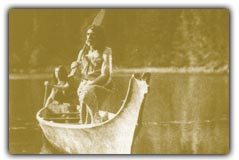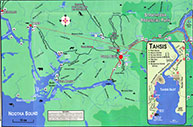History of Nootka Sound
 First Nations
First Nations
The Nootkan People
Editorial courtesy of Nootka Sound Service
In the long tapestry of history, civilizations have come and gone. Ancient Egyptians, the Romans, countless dynasties in China, the Maya and Aztecs, even the British Empire. Yet in Nootka Sound, home of the Mowachaht, we can meet direct descendants and experience the culture of a people who trace their roots back into the mists of time.
In 1966 John Dewhirst and Bill Folan of Parks Canada conducted the archaeological Yuquot Project at Friendly Cove. Evidence indicated that indigenous people had continuously inhabited the site for the last 4,300 years. In 1992 Yvonne Marshall, then of Simon Fraser University, enumerated 177 archaeological sites throughout Nootka Sound. These studies prove that Nootkan peoples had certainly inhabited the area long before the arrival of the first Europeans.
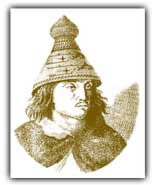 A Nootka community consisted of several distinct tribal groups, each one claiming direct descent from a known ancestor. History names Maquinna as the Nootkan Chief who met James Cook, but for generations the highest-ranking chief of the Mowachaht people bore that title, or name, “Maquinna”, a man with special rights and privileges, one holding the highest place in Mowachaht society.
A Nootka community consisted of several distinct tribal groups, each one claiming direct descent from a known ancestor. History names Maquinna as the Nootkan Chief who met James Cook, but for generations the highest-ranking chief of the Mowachaht people bore that title, or name, “Maquinna”, a man with special rights and privileges, one holding the highest place in Mowachaht society.
Nootkan villages consisted of three groups: chiefs, commoners, and slaves, the slaves being people captured during battles with other tribes, and normally being people owned only by a Chief. Members of every household accepted rank according to their relationship to the Chief, and the Chiefs ranked from highest to lowest with Maquinna as the highest ranking Chief in the highest ranking lineage group of his community.
Mobility within the kinship saw people move from house to house or even from village to village, and commoners with relatives within a household could claim residence within that household, or if they so chose, could go to live elsewhere. Therefore, in order to keep his tribe strong, the Chief had to win the respect, loyalty, and support of the people below him.
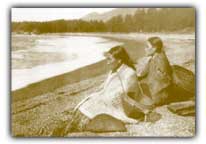 The various tribal groups lived along the beach in rows of large wooden houses, each with four to six families made up of direct descendants, together with a number of their relatives by marriage.
The various tribal groups lived along the beach in rows of large wooden houses, each with four to six families made up of direct descendants, together with a number of their relatives by marriage.
Removable planks fixed to permanent frames formed large prefabricated long houses, with the planks of the sloping roofs easily removed to allow smoke to escape, or on pleasant days to allow light and air to enter. When the tribe moved, the planks laid between canoes, became platforms on which to transport belongings and upon arrival at the new location these planks fit easily into preexisting frames to make new dwellings in which to establish the home.
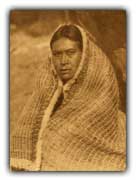 The Nootka people changed locations with the seasons, and upon the availability of the fish, berries, wild spuds, medicine roots, or bark and straws for weaving. They moved for instance to Yuquot (Friendly Cove) each February for spring and summer because of an abundance of fish, water, birds, seals, whales and sea otters. The men fished and hunted. The women gathered shellfish and herring eggs from spruce boughs placed in the water, and picked the wild local berries.
The Nootka people changed locations with the seasons, and upon the availability of the fish, berries, wild spuds, medicine roots, or bark and straws for weaving. They moved for instance to Yuquot (Friendly Cove) each February for spring and summer because of an abundance of fish, water, birds, seals, whales and sea otters. The men fished and hunted. The women gathered shellfish and herring eggs from spruce boughs placed in the water, and picked the wild local berries.
In late August, when the rains began, the Nootkans left Yuquot and moved from the outer coast into the nearby inlets and rivers to catch the salmon heading upstream to spawn. These they smoked and dried for winter food, but they also gathered a variety of edible roots, and formed ripened berries into dried cakes.
Toward mid-November the families moved again, to Tahsis, their winter home, where they hunted deer and bear, and fished the rivers. When rain curtailed such activities the time came for feasting and for celebrations.
By late December they were back out onto the coast to take advantage of the herring runs, and by the end of February were returning once again to Yuquot.
With the Nootkan lifestyle revolving around such seasonal marine resources, Maquinna had to make certain that he controlled property rights and resources in widely spaced areas, and this he ensured by making astute marriage alliances to cement loyalties. The Nootka held strongly to the concept of group ownership over individual ownership, with his tribe collecting berries, fish, and game on the property controlled by the tribe and giving whatever they gathered to Maquinna
who then gave back most of what had been collected — including food — and thereby made the resources owned by one, but shared by all.
Skilled fishermen, the Nootka used a variety of traps, nets and tools but only chiefs and some selected commoners could hunt the California grey and humpback whales. Because this dangerous work required skill, preparations began months before the actual hunt began: the hunters not only made and repaired equipment, but also performed elaborate ceremonies and rituals. By April, with preparations complete, Maquinna declared the opening of the whaling season with he, himself, leading the hunt, and his wife conducting ceremonies and spiritual preparations that began early in the morning and ended with the eating of the whale.
The Nootka enjoyed celebrations and held them often. Some marked family and individual events as well as the opening and closing of the herring or salmon seasons. The presence of guests at the feasts and ceremonies served to validate the event and amid much singing, dancing and feasting the host Chief lavished expensive gifts on his guests as thanks for their coming. In such manner he demonstrated his wealth, generosity, and prestige. The most important and elaborate celebration, the potlatch, took place when a high-ranking Chief passed to his sons any rights he himself might possess.
The Mowachaht/Muchalaht First Nation Today
The present day Mowachaht tribe, along with thirteen others, forms the Nuu-chah-nulth Tribal Council based in Port Alberni. Three Co-Chairpersons share the political leadership over the Northern, Central and Southern regions of the area. In 1980 the Nuu-chah-nulth Tribal Council presented a Comprehensive Land Claim to the Government of Canada and treaty negotiations continue today.
On March 15, 1994, the Federal government and the Band signed an agreement to construct a new village, away from the old mill site at Gold River, and today the main Mowachaht village lies three kms. north of the village of Gold River. This new community consists of forty-four single family units, an Administration office and gymnasium facility on an expanded land base of 325 acres.
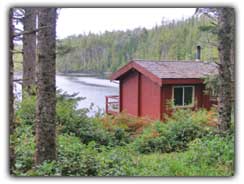 Currently the main economic activities of the community can be found in local government, the forest industry and the tourism sector. However, plans for a marina development for the old village site are currently under way.
Currently the main economic activities of the community can be found in local government, the forest industry and the tourism sector. However, plans for a marina development for the old village site are currently under way.
One Mowachat family still occupies Yuquot, the place most of the people consider their homeland. This National Historic Site, the original home of Chief Maquinna and original site of the Whaler’s Shrine, was once the only Spanish settlement in Canada. In December 1996, the Historic Sites and Monuments Board of Canada re-commemorated this site, formally acknowledging the Mowachaht/Muchalaht tribe’s 4,300 year presence at Yuquot.

